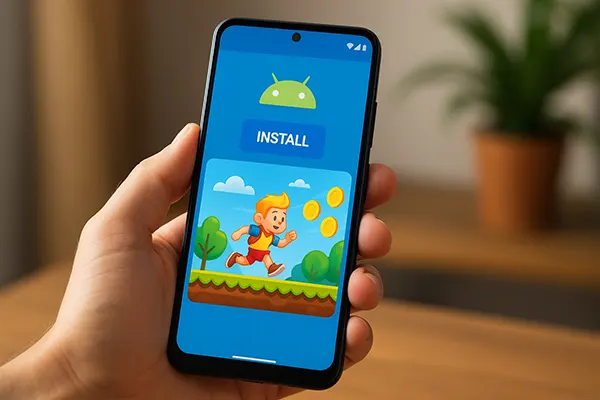
How On-Device Large Language Models Transform the Smartphone User Experience
Large language models integrated directly into smartphones are reshaping how people interact with mobile devices. By 2025, on-device intelligence has shifted from simple voice assistants to advanced systems capable of real-time reasoning, contextual support and personalised task handling without relying entirely on remote servers.
Evolution of On-Device AI and Its Practical Impact
The adoption of local processing units such as Apple’s Neural Engine, Google’s Tensor G-series and Qualcomm’s AI cores has enabled smartphones to run compact large language models independently. This change has reduced latency, enhanced privacy and allowed advanced tools to function consistently even without stable connectivity. The shift marks a technical milestone where mobile devices begin performing tasks previously exclusive to cloud-based AI.
On-device LLMs now handle language tasks such as summarising messages, rewriting content, generating drafts and assisting with professional communication. These capabilities operate in real time and adapt to user habits, improving efficiency during daily tasks. The interaction becomes smoother because the device anticipates needs based on previous activity while maintaining a high level of accuracy.
Another notable advantage lies in the security model. Since sensitive information no longer needs to be transmitted externally for processing, smartphone owners gain more control over personal data. This aligns with global trends in data protection and fosters trust in AI-driven functions integrated into everyday activities.
Performance Gains Through Local Neural Processing
The hardware advancements behind modern smartphones directly influence the capabilities of local LLMs. By 2025, devices support mixed-precision computation, specialised acceleration blocks and memory optimisations, enabling rapid generation of text responses and complex linguistic operations. These improvements allow users to rely on mobile AI for demanding tasks.
Local processing significantly reduces delays, which is crucial for applications requiring instant results. Whether drafting messages, searching personal content or controlling device settings through natural language, the interaction remains fast and consistent. The absence of server-side dependency also means that functions maintain stability in low-signal regions.
Energy optimisation plays a central role. Manufacturers now integrate dynamic power allocation systems that activate neural components only when needed. As a result, smartphones maintain battery longevity while still delivering high AI performance, achieving a balanced user experience.
Personalised Assistance Powered by Contextual Understanding
Modern LLMs embedded into smartphones can interpret behavioural patterns such as frequently used apps, preferred writing style and typical daily routines. This contextual awareness enhances productivity by enabling the device to generate more precise recommendations, automate repetitive tasks and support multilingual communication.
Smart typing assistance, predictive replies and advanced proofreading tools have become more accurate thanks to continuous on-device learning. This allows smartphones to shape outputs that match the tone, vocabulary and communication goals of the user, making interactions more natural.
Local LLMs also support accessibility features. They can convert complex instructions into simplified text, provide live transcripts for conversations and generate descriptive content for visually impaired users. These abilities significantly expand inclusivity and device usability.
Improved Workflows for Professional and Creative Tasks
Professionals benefit from AI-driven tools that operate directly on the device, including automatic summarisation of lengthy documents, generation of structured notes and adaptive scheduling suggestions. These functions streamline everyday responsibilities without exposing confidential information.
Creative users rely on smartphones for drafting scripts, refining ideas and producing coherent texts for social media or work. The precision of on-device LLMs ensures that content creation happens smoothly, even when editing large volumes of text.
Multilingual environments receive strong support as smartphones translate messages, interpret voice input and rewrite content in other languages while preserving context. This enhances cross-regional communication without requiring internet-based translation engines.

Future Directions and Technical Challenges
The integration of LLMs into smartphones will continue to develop as devices gain more processing power. Manufacturers are working on memory-efficient training techniques, enabling models to update locally using fresh user data while preserving privacy. This progress supports longer device lifecycles and reduces the need for cloud dependency.
One of the main challenges involves balancing model size and performance. While compact LLMs run efficiently on smartphones, achieving the same depth of understanding as large cloud models remains complex. Developers explore model compression, quantisation and hybrid workflows to maintain quality without exceeding hardware limitations.
Regulatory requirements surrounding data security will also influence future development. As smartphones store more personalised AI models, compliance with regional laws becomes crucial. Device makers must continue to prioritise transparency, security and user control while ensuring that AI features remain reliable and easy to manage.
Advances Expected Beyond 2025
Improved chips with dedicated AI memory blocks will allow smartphones to run larger models while preserving battery health. This will widen the range of tasks that can be processed locally, including advanced multimedia generation and detailed real-time reasoning.
Hybrid systems combining on-device processing with optional cloud extensions will become standard. Users will benefit from the speed and privacy of local models while gaining optional access to more powerful remote tools when needed.
Future smartphones may support personalised LLMs that evolve continuously, learning preferences with minimal energy use. This will create a seamless environment where the device supports communication, planning and productivity on a deeper level.



